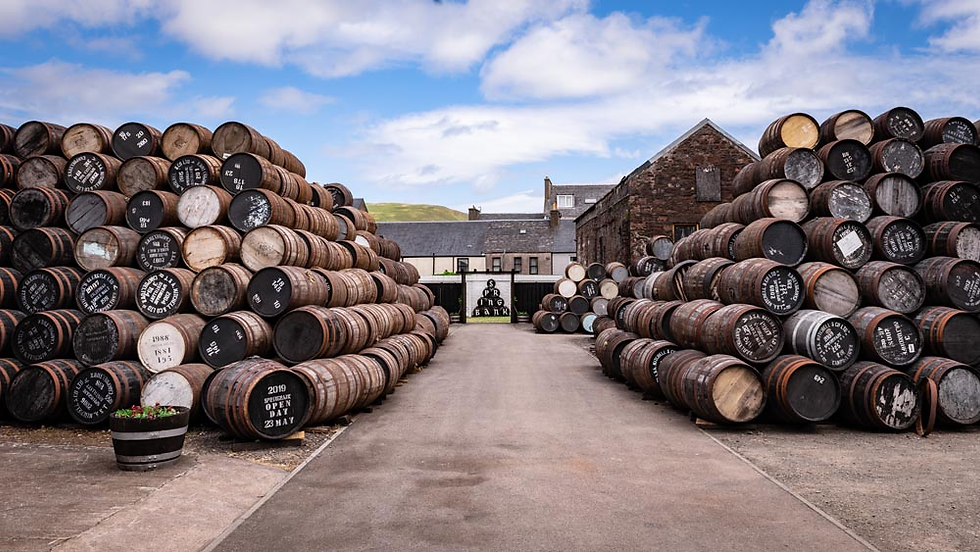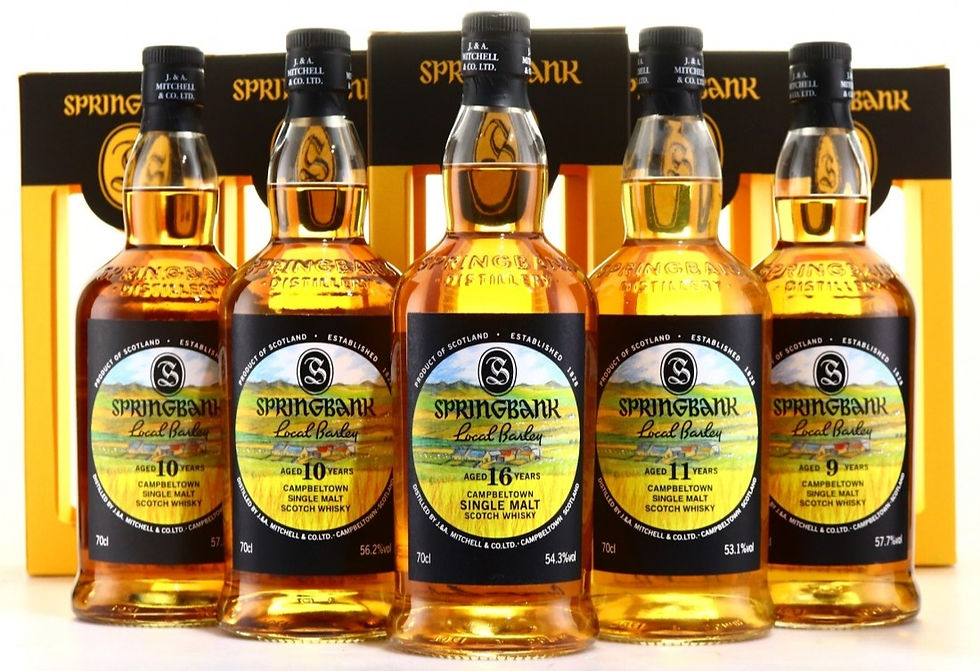
Image by Mark Littler
Nowadays, when you mention the name Springbank to people the most common reply will be: “Where? For how much?” This is a contemporary situation, truly global in its
availability and cost. But unlike some might think, this did not happen overnight.
So, what has made Springbank one of the most sought-after Scottish single malts in the world? To answer the question we need to look back almost 30 years, to the 1990s - when whisky was on the road to recovery after the terrible 80s.
The Survivor
Sitting in its cosy little corner of southwest Scotland in the town of Campbeltown lies the
‘iconic’ - nay ‘cult’ - distillery of Springbank, a true survivor of the former heartland of Scottish whisky production of the 19th century. Along with Glen Scotia, Springbank battled through the boom-and-bust years and even survived the Pattinson crash to emerge still operational but into a different world whose confidence in the product had almost been destroyed by the dealers of that time.

Image by Baysider
The now almost solitary Springbank distillery continued to make whisky through the 20th century. Scraping through the decades and hoping that someday things will get better. As the 60s approached, the interest in Scotch whisky started to grow, and the world reawakened to the diversity and quality of single malts.
In the early 1970s, Springbank almost casually decided to make a heavily peated malt as a homage to one of its lost neighbours - Longrow. This is to become an intermittent brand not often distilled, almost at the manager's convenience, but still existing.
The seed of the renaissance of single malt was planted with brands becoming more
recognised (you know who we mean?). The family ownership of Springbank has been integral to its survival, but with the approaching metamorphic times in the Scottish whisky industry, did it have the right management in place to cope with the situation? All we can do is speculate. After all, who has a magical crystal ball to look into the future? The distillery continued at its own relaxed pace unaware that the future would turn it into the icon it is today.
The Obsession
Springbank fans and other buyers/collectors always like to say, “When I first bought that, it was XXX pounds”. When did they first buy Springbank? Or the more contemporary question - how much did they pay for it originally?
When did we personally first encounter Springbank? Our first encounter with Springbank would have been a miniature - probably a 10-year-old or maybe even a 15. Springbank whiskies were only available in a select few retail outlets, and the limited availability to the new emerging whisky fans made it very attractive and sought-after. Reading about it made it almost mythical, and one of the best-known whisky writers of the time made a very persuasive argument to get it - especially if it was a Longrow.

Image by The Whisky Vault
In a way, with whisky, people become infected - they turn into an addict whose needs outweigh their sensibility and start to spiral into an obsession. That is what Springbank did, even to us. We are not going to try and explain why it occurred. There are many reasons behind being obsessive, but the seed of value was sown very early on. We are currently in the midst of the collector/investor/flipper golden age, yet back in the day, we did not know what was to come.
This is the time when people's outlook and perception changed from a product they had and saw as a drink into an investment. Also, this is where the conversation and opinions commence.

Image by Whisky Auctioneer
In the early noughties, Diageo released their first batch of Special Releases. Introducing fans to mythological, and almost unobtainable, lines such as Port Ellen and Brora - deemed lost and forgotten. This did not go unnoticed by Springbank since very soon after; we were introduced to the equally rare and valuable Local Barley range. The 1966 Vintages and the West Highland Malt selection were even rarer than the Diageo bottlings. Some 1974 Longrow had been seen earlier, mostly around 25 years old, but they were almost overlooked.
These releases didn’t have the fanfare that Diageo put on, and so people became enamoured with the Special Releases. Springbank did not need to be treated as a diva, so these limited releases were quietly purchased and confined to the dark recesses of the whisky cupboard for a special occasion.

Image by Whisky Auctioneer
We saw the emergence of a new superstar in the 21-year-old version - probably the first highly sought-after Springbank of its time - at a ridiculously affordable price. The wheel started to turn, and this small distillery in the almost forgotten region of Campbeltown started to attract a wider audience.
With the success of its limited brands - including Hazelburn, Longrow and Kilkerran - Springbank is now in the envious position of having high global demand. The worldwide exposure, aided by the internet, means the distillery's fame is now known everywhere, creating a much bigger market and, therefore, higher demand for its whiskies. And this is where the dilemma starts to grow. Will Springbank increase production to cater for the almost guaranteed future world demand? Or does it keep making enough to get by and remain the resolute, independent, artisanal distillery it is today?
Springbank will continue to do things the way they want. It is a business. But when it becomes more than that and attains a level of fandom that surpasses its potential, dealing with high demand becomes a real headache that deserves a solution.

Image - a screenshot from a whisky auction
As we arrive at the situation today - the stock lines are selling on the secondary market for over twice their recommended retail price. So, is there a solution? In short, there is no real answer. The flippers will always find ways to get their bottles even if retailers drip-feed the products.
You could say that it's Springbanks' fault for not releasing enough stock that's created this
situation or that they are not producing enough whisky to meet the demand. Make excuses that they did not think to make enough whisky pre-COVID and that the situation was unforeseen. In our opinion, the lack of available stock was bound to happen. The industry created the monster itself, and people will always want more than they might need. The seeds were laid in the late 90s, and it has taken these past 20 years for this situation to develop.
Will the demand diminish? Unlikely. Springbank continues to make great whisky, and the
demand for high-quality whisky doesn't seem to be going away soon. They might change things, but we think that is highly unlikely. Being successful in a demanding world will impose pressures that we're sure Springbank will deal with in its serene way.
What do you think about the availability and state of Springbank whiskies? Please leave a comment below.

.png)
Right now I am sipping a wee dram of the Springbank 2000 Murray McDavid 9 year old finished in Ch. d’Yquem casks. Honey and spice and elegant silky finish that lingers on the tongue like a sweet kiss. Incredible balance that melts with melon sweetness into afterwaves of toasted buttered brioche.
And I can not help myself but I keep refreshing my chalice to savor this nectar worthy of Dionysus himself.